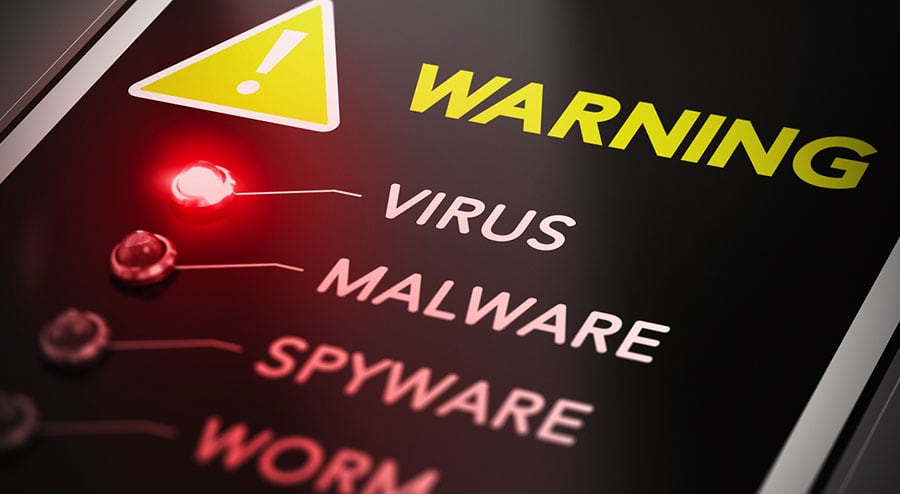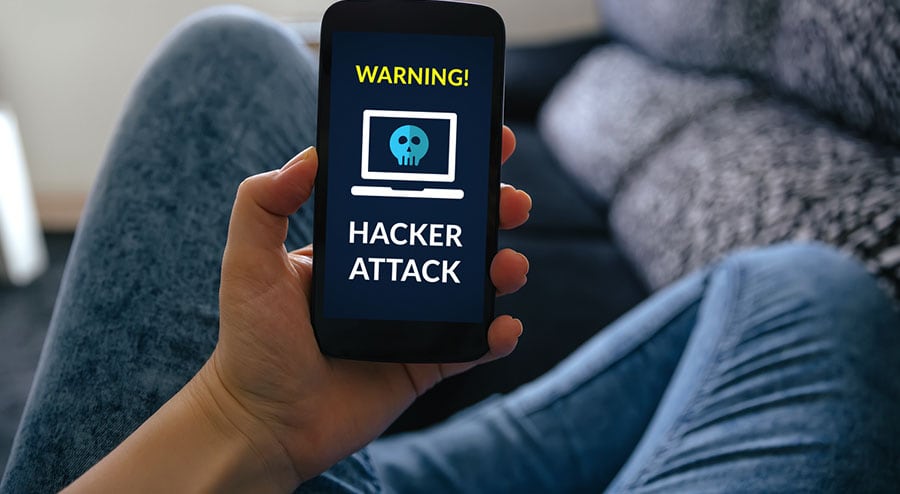Computers, even those with virus and malware protection, are vulnerable to cyber attacks where personal or business information can be stolen. Hackers and cyber criminals are experts at finding anything of value on a computer.
Even if you do not think there is anything of value to find if hacked, think again. Hackers do not just steal personal information; a cyber attack can also damage the computer’s network and/or system. This would result in needing new equipment, which is costly.
Cyber attacks can target anyone. According to a study conducted by A Clark School at the University of Maryland, a cyber attack occurs every 39 seconds. If a computer is connected to the Internet, it is susceptible to attacks, even with anti-virus software.
Different Types Of Cyber Attacks

There are different types of cyber attacks that can affect a home computer. Understanding the different types can help with detecting issues and enabling the needed security measures to prevent that attacks.
Malware
Short for “malicious software,” malware is a general term for any software with an intent to damage or disable a computer and/or computer system. This can include viruses, spyware, trojan horses, and other malicious forms of cyber attacks.
Malware is commonly contracted through email links from unknown sources and sometimes pop-up ads. Malware allows hackers to take control of the computer, monitor every action done on the computer such as keystrokes, and send personal information to the hacker’s computer to exploit.
Phishing
Professional hackers know that most people will not open up a random email link from a source they do not know and trust. Therefore, many hackers will install malware into an email that is made to resemble a sender the computer user knows. This increases the likelihood of the user clicking on a link and unknowingly adding the malware to their computer.
Social Engineering
This type of attack is one that does not occur quickly. The hacker takes advantage of the victim overtime by psychologically manipulating them.
The hacker is able to get the victim to release their personal information or perform a certainaction that allows the hacker access to the computer. This can also be damaging in a workplace setting where the victim becomes liable for lost assets within the company.
Ransomware

Ransomware is one of the most advanced forms of cyber attack. A hacker can encrypt the data in a computer with the use of an infected banner ad, email attachment, or an infected website—rendering the computer unusable.
Personal information is taken, destroy data, and also use the computer to launch new attacks on other victims. The hacker(s) will then demand a sum of money to be paid in order to get control of the computer back with the encryption key.
Credential Reuse
There is a reason websites tell a user to create a unique password. Most people have multiple logins for a plethora of websites. It is tempting to reuse the same password, something most people do.
Hackers love it when people reuse a password for multiple websites. If just one website gets hacked and the hacker gains a list of usernames and passwords, they can use those passwords to successfully login to other sites where personal information is stored.
Understanding Different Types Malware

Malware is a broad term that covers an array of cyber attacks. According to a study conducted by Zogby Analytics for The Hartford Steam Boiler Inspection and Insurance Company, one in three Americans had been hacked in a span of 12 months (study conducted in 2016).
Understanding how each type works and how it presents itself is the best way to identifying a problem and fixing it. Some common malware types that are a specific threat to home computers include:
Viruses: This is the most well-known malware type that everyone has heard about. However, not everyone actually knows what a computer virus is. A computer virus will attach itself to a clean file which will attack other clean files. This will lead to the computer malfunctioning and files being deleted.
Spyware: Just like it sounds, spyware is malware that is created to spy on a computer. It will take notes on the user’s passwords, banking information, web surfing habits, and more.
Trojans: This is malware that is disguised as genuine software or has been attached to genuine software. It will develop backdoors in the computer that allows other types of malware to bypass security and affect the computer.
The New Latest Type Of Cyber Threat

Hackers have a new way of targeting victims and that is through smartphones. With the number of smartphones users in the billions worldwide, hackers can easily get a user to unknowingly install malware onto their smartphone with the use of the Internet.
Smartphones have limited security when compared to computers. Hackers use this to their advantage. If a smartphone is plugged into a computer for any reason that malware can then infect the computer.
Due to the compact size and portability of smartphones, a more direct approach for hackers is to steal the smartphone from the user. Through this, the hacker can obtain personal information, corporate data, and financial information.
Smartphone users can also be the victim of phishing. A hacker can manipulate a user in downloading malicious content through email, text messages, and even phone calls.
How To Protect Your Computer And Phone

Protecting your computer from a cyber attack is a must in order to keep personal information secure. Along with secured information, no user wants to have to pay for new computer equipment if it was destroyed by a cyber attack.
Many computer users fear that updating security means paying for a costly program, but this is not true. Luckily, there are many simple tips and tricks available that help users understand the risks and how to protect themselves from attacks.
Unique Passwords
One of the most basic ways of protecting your computer from a cyber attack is by creating difficult passwords. Many websites have guidelines on the screen when creating a password. This is to deter users from using generic passwords that can be guessed by hackers.
Unknown USB Drives
USB drives can carry malware which will transfer over to a computer if plugged in. To reduce the risk, only allow USB drives to be plugged in if you know where it came from and what content is on the drive.
Accepting Requests
Hackers utilize social media to prey on potential victims. Accepting a request from an unknown person can have consequences. Spotting a potential hacker can be a bit easy with one look at the profile.
Do they have a lot of friends? Do the pictures look authentic? Is the information about themselves vague and generic? All of these factors can help you decide whether or not the person is legitimate. It is always better to be safe and avoid accepting requests from unknown people.
External Hard Drive
Losing data is something no one wants. Data can be lost by error and, more importantly, can be destroyed by a cyber attack. External hard drives backup data so that nothing is truly lost.
There is software available that will back up the data regularly so most, if not all, data will be backed up. This can also help save you money in case of a ransomware attack. Never pay the ransom! Rely on the backup.
Keep Updated

Pop-ups for updating the computer can be annoying. However, they are important. Hackers prey on the anolder version of software because it becomes vulnerable. Keeping the computer updated means having more security.
Text/Email Alerts
Social media platforms and emails typically have a form of cyber security where they text/email a user alerts about logins from new devices or suspicious activity on an account.
New logins from some sites also require a code to be entered that will be sent. This two-step authentication system is to keep the account from being hacked. Enabling this feature can help you keep on top of things.
HTTPs
Websites that begin with https encrypts the input and output data to keep hackers from tampering or spying on the site. A website that does not begin with https (may just say HTTP) should never be trusted with sensitive information such as credit card info addresses, and other personal information.
Smartphone Security
Keeping your smartphone safe is another form of cybersecurity. Make sure your phone is password protected in case it is stolen. Using encryption will protect sensitive information stored on the phone as well.
When installing apps, make sure the check the permissions and the maker of the app. Some apps are infected with malware. Also, turn off Bluetooth and Wi-Fi when it is not in use.
Anti-virus Programs
Although anti-virus software can miss some things, they are still the most important aspect of cybersecurity. It is worth paying for an anti-virus security program with two-factor authentication rather than downloading a free one. They help prevent, detect, and remove most malware threats and protect against cybercriminals.
Sources:
https://www.wired.com/2016/05/4-ways-protect-ransomware-youre-target/
https://www.forbes.com/sites/realspin/2014/02/07/5-ways-to-protect-yourself-from-cyber-attacks/#8c07b9f5afb6
https://www.webroot.com/us/en/home/resources/tips/online-shopping-banking/secure-what-is-social-engineering
https://www.lifewire.com/cyber-attacks-4147067
https://digitalguardian.com/blog/social-engineering-attacks-common-techniques-how-prevent-attack
You Might Also Like
You May Also LikeAccording to a study conducted by Zogby Analytics, one in three Americans had been hacked in a span of 12 months.
Resources | About Us | Contact Us
877-664-6140
1530 WILSON BLVD., ARLINGTON, VA, 22209

